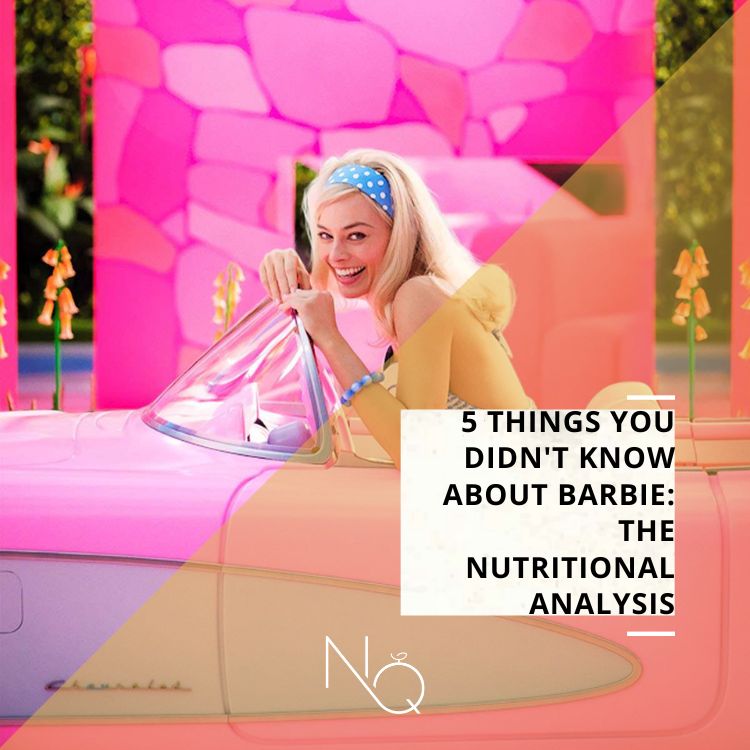With the recent release of the Barbie movie and crowds rushing to see it, here are five things you didn't know about Barbie that are related to diet. Can a role model like Barbie influence the way we perceive ourselves and our eating habits? Read on for the answers.
1. Barbie is on a Diet
Fact: Barbie is a fashion doll famous for her impressive and varied outfits, as well as her various occupations and professions. She has been a soldier, a lifeguard, a baseball player, a veterinarian, an engineer, a teacher, and more. She even has accessories like a pool, caravan, pets, and a house. Interestingly, after engaging in all these activities, she also embarks on a diet, keeping up with the trends of the time. For instance, 'Baby-sitting Barbie' made her appearance in 1963 alongside a 'How to Lose Weight' manual, which advises 'Don't eat!' The same book reappeared in 1965, along with a scale that consistently displayed 50kg.
Diet Comment: Every person can make whatever decisions they want about their body, but since the beginning of her existence, Barbie has been a favorite toy among children. Thus, we find the advice "Don't eat!" impactful when it comes from their beloved doll. Of course, it's important to note that weight loss is not a universal requirement, and such notions can sometimes be detrimental.
2. Margot Robbie is on a Diet
Fact: The star of the film, Margot Robbie, had to adopt a specific diet to meet the demands of her role as Barbie. Her diet consisted of porridge and a smoothie in the morning, a chicken salad for lunch, and tuna fillet with sweet potato in the evening. Simultaneously, she abstained from sweets and carbohydrates and consumed a considerable amount of tea. Her "cheat day" was Mexican cuisine. To stay fit, she engaged in various exercises such as pilates, boxing, and weightlifting.
Diet Comment: It's quite common for artists to modify their diets to embody a role. Margot Robbie's diet likely involved some calorie restriction to achieve a slim, 'Barbie'-like appearance, along with sufficient protein and complex carbohydrates to support muscle development. The mention of tea is intended to provide a relatable detail and clarify that Margot Robbie's preference for it is unrelated to weight loss. Clearly, the consumption of sweets was limited to ensure the necessary calorie intake from quality foods that nourish her body. As for her exercise routine, combining weightlifting with other forms of exercise can yield very favorable results.
3. Barbie's Body is Entirely Unnatural
Fact: If we were to measure Barbie using human-scale dimensions, we would uncover some intriguing statistics. Enlarged to human size, Barbie would stand at 1.75m tall, boasting a Body Mass Index (BMI) of 16.3 and a body fat percentage under 21%. Her hypothetical measurements would include a 91 cm bust, a 46 cm waist, and an 84 cm hip circumference.
Diet Comment: Barbie's notably slender waist has often been criticized for its size, with Mattel responding that enlarging it would result in ill-fitting clothes due to buttons and snaps. Mattel subsequently introduced a slightly wider waist for Barbie. However, her BMI, combined with low body fat, would raise concerns about potential health issues such as hormonal imbalances. Moreover, her abdomen might not have sufficient space for vital organs. These findings prompt us to question whether Barbie can genuinely serve as a healthy role model for young children.
4. Barbie is inclusive
Fact: Mattel has introduced various versions of Barbie with the aim of promoting inclusivity, seeking to represent a wider range of individuals. Consequently, there are Barbies in wheelchairs, featuring different skin tones, showcasing skin conditions, reflecting diversity in weight and body type, and celebrating multiculturalism.
Diet Comment: Undeniably, it's intriguing that each child can select a Barbie that resonates with and represents their own uniqueness. Embracing diversity and recognizing individuality will contribute to fostering a positive body image and promoting a healthy relationship with one's own body, both now and in the future.
5. Barbie and the Link to Eating Disorders
Fact: Numerous studies have established a connection between Barbie and the development of negative body image and eating disorders. A study involving 162 girls aged 5 to 8, who were exposed to Barbie, another doll (Emme doll), or no doll (control group), revealed that those exposed to Barbie exhibited body dissatisfaction and desired a slimmer physique.
Diet Comment: Of course, I agree with these findings. While it's crucial to evaluate the impact of the games our children engage with, attributing all instances of body dissatisfaction to Barbie oversimplifies the issue. It's important to consider the broader societal influences and the choices we make as a society.
In summary, this article aims to shed light on lesser-known aspects of Barbie. As we immerse ourselves in the movie and its narrative, let's contemplate how Barbie may have influenced our lives. Ultimately, the most potent influence on us is our own determination to align our body perception and dietary choices with our personal convictions. Have fun watching the movie!
BIBLIOGRAPHY
- Dittmar, H., Howard, S., & Koo, T. (2006). Does Barbie Make Girls Want to Be Thin? The Effect of Experimental Exposure to Images of Dolls on the Body Image of 5- to 8-Year-Old Girls. Developmental Psychology, 42(2), 283-292.
- Nesbitt, A., Campbell, M., & Foster, C. (2019). Barbie's New Look: Exploring Cognitive Body Representation Among Female Children and Adolescents. PLoS ONE, 14(6), e0218315.
- Wikipedia contributors. (2023, August 13). Barbie. In Wikipedia. Retrieved August 13, 2023, from https://en.wikipedia.org/wiki/Barbie




